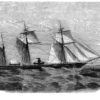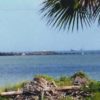The Southeast Transit Corridor Stations will be located on the edges of Houston’s Third Ward, a predominately African American community. Given this community’s location, The Dawn Project / Johnston Marklee team consciously focused on honoring the powerful contributions of Houston’s African Americans. Working with six historians who specialize in African American history situated in Texas […]


 Follow
Follow







